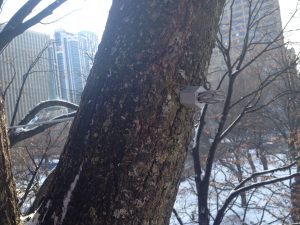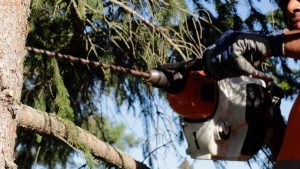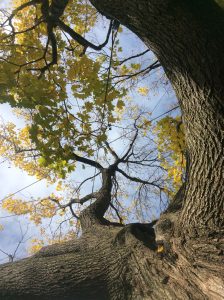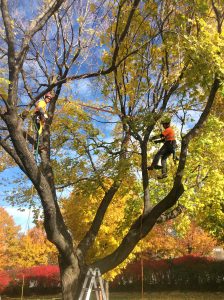Cabling and Bracing
Cabling is a technique that consists of reinforcing its structure by using steel cables or rods to hold the branches or trunk of the tree. This technique is often used when the tree is poorly structured, damaged or weakened and at risk of breaking or falling.
Cabling can be done in a variety of ways, depending on the location and size of the tree and the severity of the situation. Steel cables and rods are attached between the parts of the tree that need support and can also be anchored into the ground or surrounding structures to provide additional support. cabling may also involve the use of synthetic materials, such as polypropylene rope, to reinforce the tree structure.
Cabling must be done carefully to avoid damage to the tree. Therefore, it is often recommended to hire a professional to perform cabling, especially for large trees or for difficult and dangerous jobs. It is also important to note that cabling is not a permanent solution and will need to be re-evaluated regularly to ensure its effectiveness and the safety of the tree and its surroundings.
WHAT ARE THE ADVANTAGES OF BRACING?
The benefits of bracing are as follows:
Safety
Bracing can help prevent falling branches or the entire tree, which can prevent damage or injury.
Tree Protection
Bracing can help protect the tree from damage caused by storms, high winds and other extreme weather conditions.
Tree Life Extension
Bracing can help extend the life of the tree by supporting branches that are diseased or damaged.
Tree conservation
Bracing can help prevent the tree from being cut down prematurely by preventing it from becoming a hazard to people and property in the surrounding area.
WHAT ARE THE BRACING TECHNIQUES?
There are several bracing techniques to reinforce the structure of a tree using steel cables or rods. Common bracing techniques include:
Dynamic bracing
This technique uses ropes to provide support to the tree. The ropes are attached to the branches or trunk of the tree and sometimes are attached to anchors in the ground. This technique allows flexibility for the tree in case of wind or storm.
Static bracing
This technique uses steel cables to provide support to the tree. The cables are attached to the branches or trunk of the tree and sometimes are attached to anchors in the ground. This technique is more rigid than dynamic bracing and is best suited for larger trees.
Rigid bracing
This technique uses steel rods to support the tree. The rods are drilled into the base of the unions in the parts of the tree that need support and then secured with nuts and bolts.
Combination bracing
This technique combines the two techniques above by using both cables and steel rods to provide support to the tree. This technique is used for trees with complex structural defects.
Bracing should also be re-evaluated regularly to ensure its effectiveness and the safety of the tree and its environment.
WHAT IS THE DIFFERENCE BETWEEN BRACING AND PROPPING?
Bracing and propping are both strengthening techniques used to support a tree, but they are different in method and purpose.
Bracing is a technique that uses steel cables or rods to reinforce the tree structure and reduce the risk of breaking or falling. The cables or rods are attached to the branches or trunk of the tree and are sometimes anchored into the ground or surrounding structures to provide additional support. Bracing is typically used for trees that have structural defects, are weakened or have sustained damage.
While propping is a technique that uses poles to support a portion of the tree that is too heavy or has suffered damage. The poles are attached to the part of the tree that needs support and then anchored into the ground or surrounding structures to provide additional support. Propping is typically used for trees that have overly heavy branches or that have sustained damage.
In summary, the main difference between bracing and propping is their method of supporting the tree. Bracing uses steel cables or rods to reinforce the tree structure, while propping uses poles to support a portion of the tree that is too heavy or has suffered damage.









